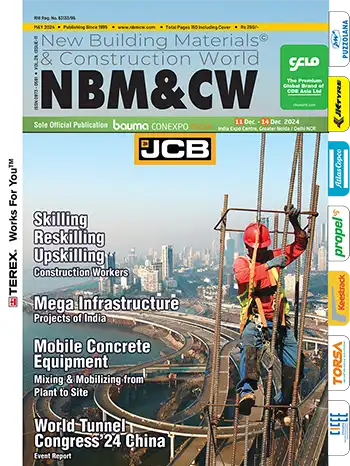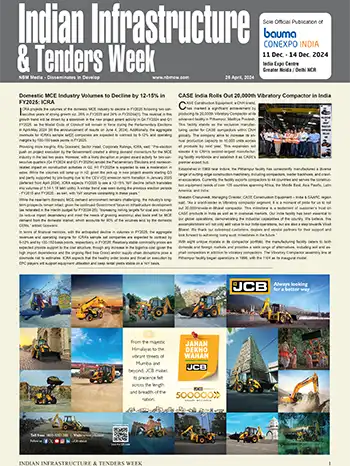Hess Group to Setup its Production Facilities in India
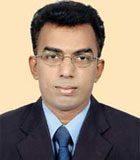
Please introduce Hess Group to our readers, its progression over the years to its present status as a leading company in the building-material machine sectoron a worldwide scale.
Hess Group is a 60–year old German concrete machinery manufacturing company with production and service facilities all over the world. Three production units in Germany consist of Hess Maschinenfabrik, HMB Moulds and Schlosser Pfeiffer. Hess Canada, Hess China, Hess France, Hess USA, Hess Middle East, Hess Russia, and Hess AAC Netherlands are the other divisions in the Group. Two more production units are setting up one in Mexico and the other in India.
The main production lines are in concrete block machines (mobile and stationary), handling systems, batching and mixing plants, concrete pipe machines, concrete roof tile machines, step machines, autoclaved aerated block machines and special machines for tumbling, splitting, shot blasting, grinding, and washing.
What are Hess Group’s important business areas and its compre- hensive product range?
The smallest Hess machine can do 6000 blocks (20cm/8") in 8 hours and then 10,000, 15,000, 23,000, 25,000 and 30,000. Also we have a mobile machine to produce 1000 hollow blocks per hour. All the stationary machines are able to produce hollow, solid, hourdi, kerb stones, heel kerbs, flag tiles, retaining wall blocks and all kinds of interlocking pavers.
Hess AAC machines can do minimum 200cbm and then 350, 550, 900, 1350, 1550 and 2050cbm daily.
The pipe machine can produce 200 to 6000mm diameter pipe with a maximum length up to 5 meters in higher capacity. The Schlosser Pfeiffer mixing plant from Hess with a capacity ranges from 500litre to 3750 liter.
The advantage with full automatic plants are less land area, less employees, higher output with better quality and flexibility of production.
How has the present spell of slowdown affected the global market for Hess and measures at handto brace this challenge in India and abroad, where it has its presence?
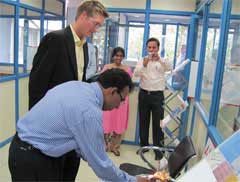
Also the Hess management believes in reinvesting and we feel that this is the right time to do so. That is the reason we are in the process of setting up production units in Mexico and in India. By entering into potential markets of these countries, we are looking ahead. Financially, we are in good position or else, we could have not thought about such expansions.
Having tested waters in Indian market about Hess products and services and now graduating its presence in India through its own outlet, what different market strategies and thrust, Hess would adopt to further consolidate its position in India to stay ahead in the business? What are the growth targets, Hess has set for its operations in India in the next 2-4 years?
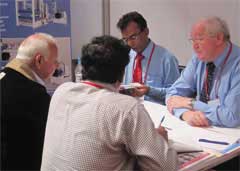
Also they should provide guidelines in creating the proper standards according to the Indian climatic conditions. India is a vast country with different climatic conditions. The authorities should study it carefully and suggest the right materials which are economic, environment–friendly and quality assured. While planning the infrastructure projects, they should consult with International organizations with long term strategies. Unfortunately, some of the state governments are still far away from these points. Basically, in the brick industry is using fertile sand which is very useful for the agricultural purpose. In that way, they are against the environment and agriculture. One more thing is about the saving of energy. Some of the products are sound insulated; thermal insulated which means saving electricity and environment friendly.
In India, a number thermal power stations are working and producing a lot of fly ash which is creating a lot of problems to the environment. We do not have a proper solution to solve this issue. A very small quantity of fly ash is used in cement plants and ready mix plants. The balance remains and we have some machines available to utilize 70% fly ash as raw material. The governments are aware of that but still they are hesitant to take any control to save the eco–system.
Hess has already prepared a master plan for the India which is not only to sell the machines but also to educate the people about the advantage in using these kinds of materials. Also we redesign two models of machines suitable for Indian conditions to start with a semi automatic system and in a later stage to upgrade to full automatic plants without any major changes. We are also aiming to produce special products apart from normal blocks which will be a value added feature to the normal products. Already we have started the engineering division and in the process of setting up a factory in near future. This will avoid the total import taxes, freight costs and the additional overheads.
What has been the focus of Hess participation in Excon 2009 and the response it generatedthrough its participation? Any new product or services unveiled at this show?
From Excon 2009, we were able to generate a good number of enquiries and at the same time we announced the opening of our operations in India. We also announced the model suitable for the Indian market with some modifications in the existing machines. This model could be suitable for the medium and small players to enter into the industry and in a later stage to upgrade for the higher capacity and full automation. As we mentioned earlier that India is the future market and we are in the beginning. So we are considering the machines for the standard products as well as keeping the option for special products like shot blasting, washing, splitting, milling, tumbling and coloring.
Do you think that Hess participation in Excon 2009 has fulfilled its marketing objectives? Can you state any significant development or a breakthrough achieved through your participation in Excon 2009?
We were able to meet up with the real serious clients during the Excon and explained to them about our intentions. Apart from the normal enquiries, we could be able to interact with the different categories of potential clients. Basically, this will help us to chalk out our plan clearly to introduce the models. Each market is different from others, especially in India having vast land area and different kind of soils.
Material differs from place to place and in any case the main advantage with Hess is to save the cement than the other machines because of the special vibration system.
Post recession, do you think that there would a marked change in market sentiments to pep up the market for the type of products and services Hess specializes in?
Whether it is after the recession or before the recession, construction is the back bone of all the developments. The only thing during recession is the amount of construction slow–down but definitely this will back on track soon. It will take one or two more years and we are prepared for coming years. Even during the recession, Hess was able to sign a number of contracts in Middle East and none of the existing installation delayed due to recession. Considering the size and population of India as well as the increase of quality awareness with the people will help the concrete industry to grow further forward.
You personally have a vast and in depth experience in market developments. How is marketing and promotion of concrete products machines in India different from other countries? What induces markets in India–the Government’spolicies, price, related technical services etc? What Indian market can learnfrom worldwide experience that you haveso as to enable it to garner adequate piece of global business pie?
Actually concrete industry is a vast one and we need to understand it very carefully that how it is different from others. Normally, each country having its own standards in this industry but again needs to draw a clear line in my experience. The raw materials from place to place is different, climatic conditions are different, requirements and standards are different. What I could see in India is we do not have an Institute similar to ACI or ICT to provide the necessary information’s to government as well as the general public. Actually these kinds of institutions could study the international standards carefully and derive the right ones for different regions of India. Then the awareness of materials, machineries and products is very important.
We need the awareness of the advantages with the latest technologies and of course the importance of time management which we are not concerned. In US and Europe, the institutions are associated with companies in developing the new methods which helps both the sides and good for the industry.
What will be your ultimate message that you would like NBM&CW to address to its wide readership as well as your existing and new prospective clients reminding them of Hess deep commitment in engineering, developing and sustaining global supply of concrete building machineries with its iconic brands globally and locally?
NBM&CW is the first Indian magazine in which we put the advertisement. Actually we prefer to share our experience in this industry with the NBM & CW readers which are directly reaching to the architects and consultants. There are some international magazines like CPI and BFT where we are advertising regularly.
Apart from the normal advertising, these magazines regularly cover some of the running plants from our clients and also cover new products in the market. We would like to highlight our different divisions in each book with some explanations. In that way we’ll be able to give some feedback about the latest changes and trends in the industry. I am pretty sure that NBM&CW is doing a good job in the construction and building material industry.
NBMCW January 2010














